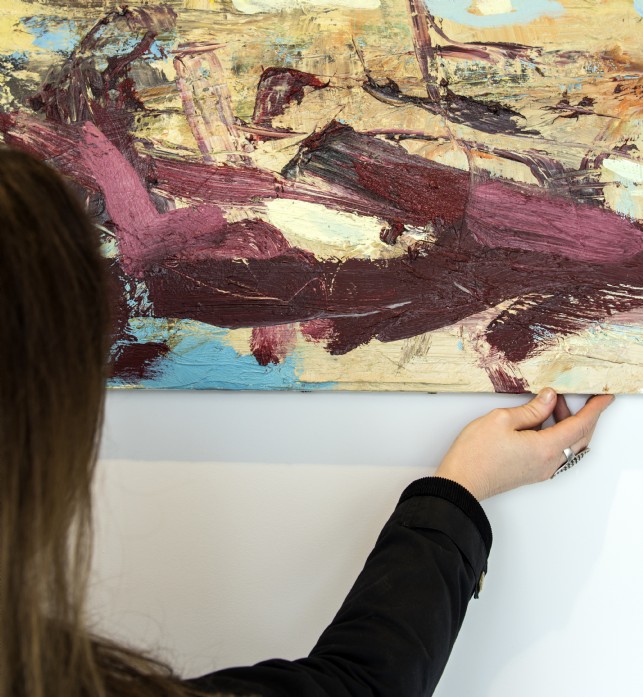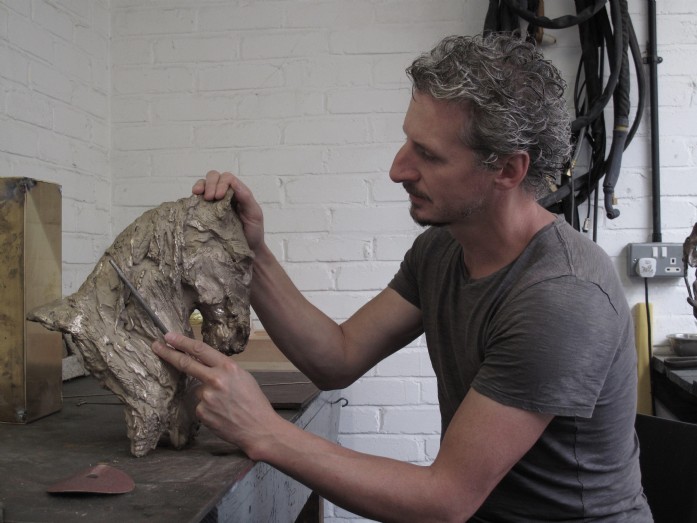Find Your Focus
Once you find where your eye wants to rest in a space, that's the start point for any art scheme or collection and, if you can’t decide where that is, any good art scheme designer will be able to point it out to you. There are always several focal points in any given room, but one usually sings loudest: start there, testing things in situ to check the 'feel' is right. This choice can be narrowed down with computer visualisations and apps, which will help you to create illustrative mock-ups of different art on your walls, but nothing ever replaces the importance of trying out art in the actual space.

Image: Jen Larkin artist-founder of Art Eye. Artwork by Paul Wadsworth
Tell Your Story
Art is a journey, your favourite pieces tell your story. The art on your walls can also help to tell the story of a space; why you fell in love with the area and bought or built a property there, for instance. Only you will know those exact reasons, but bear them in mind during your art search and shortlisting process – or simply tell your art consultant about your thoughts. You’ll be amazed at how art, when it’s chosen or commissioned with careful meaning, brings a space to life.

Image: The Stack Trelion, Cornwall. Artwork John O'Carroll
Setting the Right Energy
Be inspired by the energy of art you love. It can be a source of ideas and a great start point for your interior design scheme. Art doesn't have to be an afterthought - once you’ve found something which provides ‘a spark’, have confidence in the way it makes you feel and subtly amplify it. This can be achieved by choosing a texture, colour, form or line which appeals to you most and bringing together textiles or furnishings which compliment these elements within your space. Try not to create an exact visual match, nor extend the thought too far, or your space could look too contrived.
Provide a Space for Contemplation
Creative minds need a place to rest. Look inside, outside; consider the flow through the entire propertyand use art to invite relaxing contemplation in a peaceful part of the house or garden – perhaps by emphasizing a beautiful view. A perfectly placed sculpture, like one of Andrew Lacey’s stunning figurative bronzes, can work wonders in an exterior or interior landscape. Remember, ‘Art’ can take many surprising forms and indeed many contemporary artists are working to blur the boundaries between disciplines –for example by creating sculptural ‘benches’, which are valuable contemporary works of art in themselves.

Image: Artist Andrew Lacey, Bronze Sculpture; Effra
Put it in The Mix
Don’t be afraid to mix art and design styles, but always be conscious of the references you make. A completely eclectic mix, chosen for arbitrary reasons, seldom works well, but simple contrasts are good. For instance, using a traditional space as a backdrop can help contemporary furniture and art to shine out much more strongly, or vice versa. It's a technique which is very effective, if you wish to make a playful, ‘knowing’ style statement.
 Image: Seraphina, Roseland Peninsula, Cornwall. Artwork by Karen Mcendoo
Image: Seraphina, Roseland Peninsula, Cornwall. Artwork by Karen Mcendoo
Art & Language
Finally, remember that art communicates to us in a very direct, non-verbal way. This languagetranslates quite differently from person to person. The beauty is in the eye of the beholder as they say. Once you know you love something, have confidence in it. Revel in the act of looking – rememberart wants you to stare. Observe your thoughts and notice the quality of artistic production, enjoy thinking about the idea behind it; why the artist made it. Inspire others to see art differently by your example, follow your eyes, and don't be afraid to buy into something which isn't widely known… yet!

Artwork by Laura Oakes
Visit: Art Eye for more information.





